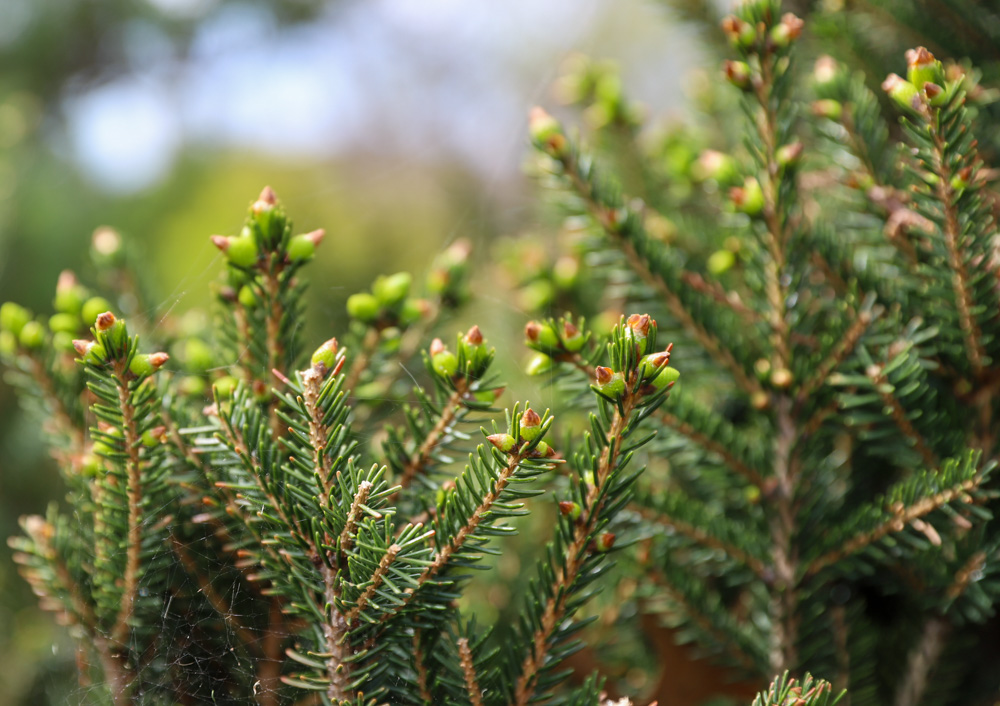
Missouri’s landscapes are dotted with a vibrant tapestry of native wildflowers. These plants add color and beauty to the Midwest and play critical roles in sustaining our ecosystems. From native prairies to home gardens, native wildflowers support pollinators, provide natural benefits like soil control and draught-resistance, and enhance the beauty of our region. During Wildflower Week (July 9-14, 2024), Powell Gardens will explore some of Missouri’s native wildflowers, their unique characteristics, and their ecological importance.
missouri’s Native Wildflowers
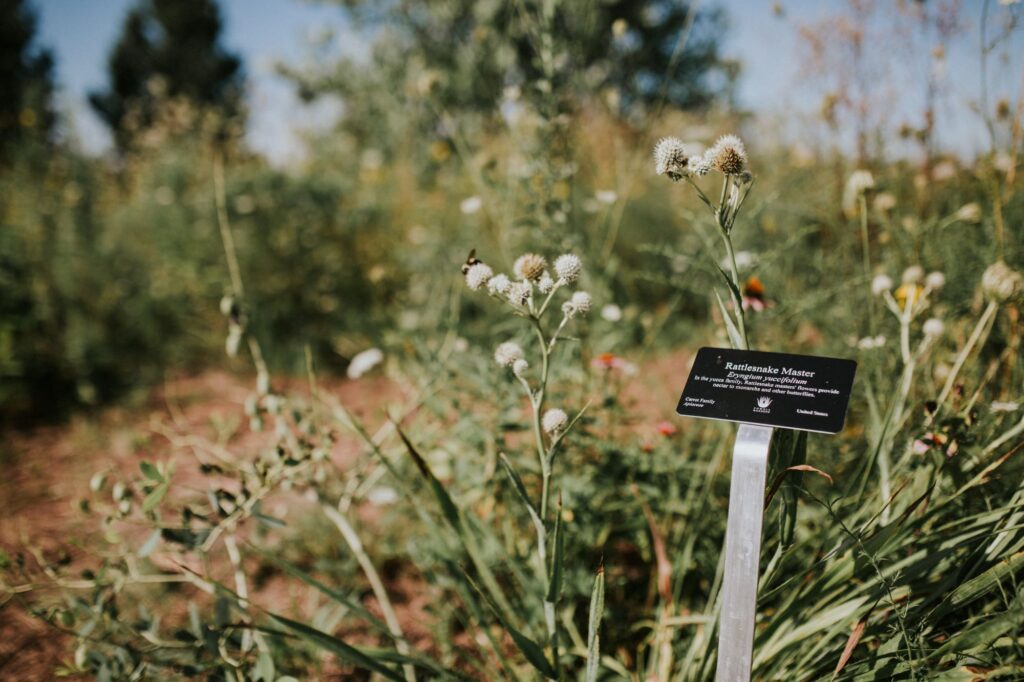
Rattlesnake Master (Eryngium yuccifolium)
Flowers: July-August
Rattlesnake master is a distinctive wildflower. Its yucca-like foliage and striking white bristly flowerheads each contain about 100 individual flowers. This plant earned its name because indigenous peoples brewed tea from its roots. (It was thought to be an antidote for rattlesnake venom, but it is not effective as a cure.) Beyond its historical medicinal uses, rattlesnake master adds a unique texture to prairies and gardens alike.
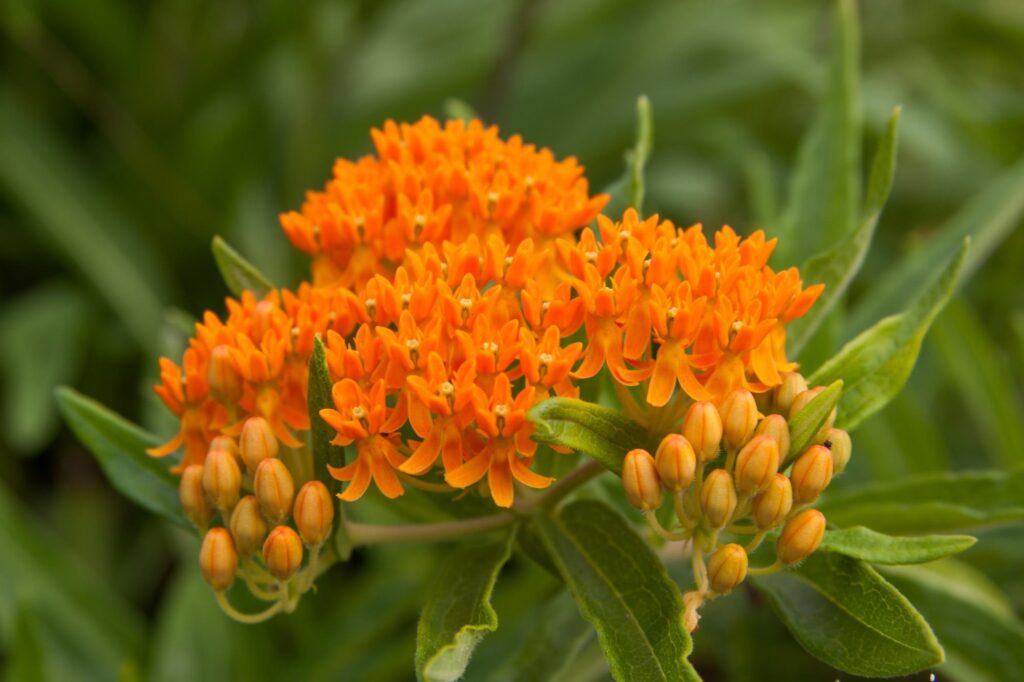
Butterfly Milkweed (Asclepias tuberosa)
Flowers: June-July
A well-known pollinator friendly plant, butterfly milkweed is the only host plant for monarch caterpillars. The monarch species relies on this plant for its survival! This wildflower thrives in full sun with good drainage and attracts many other pollinators, including moths and hummingbirds. Its vibrant orange flowers make it a favorite among gardeners and butterflies alike.
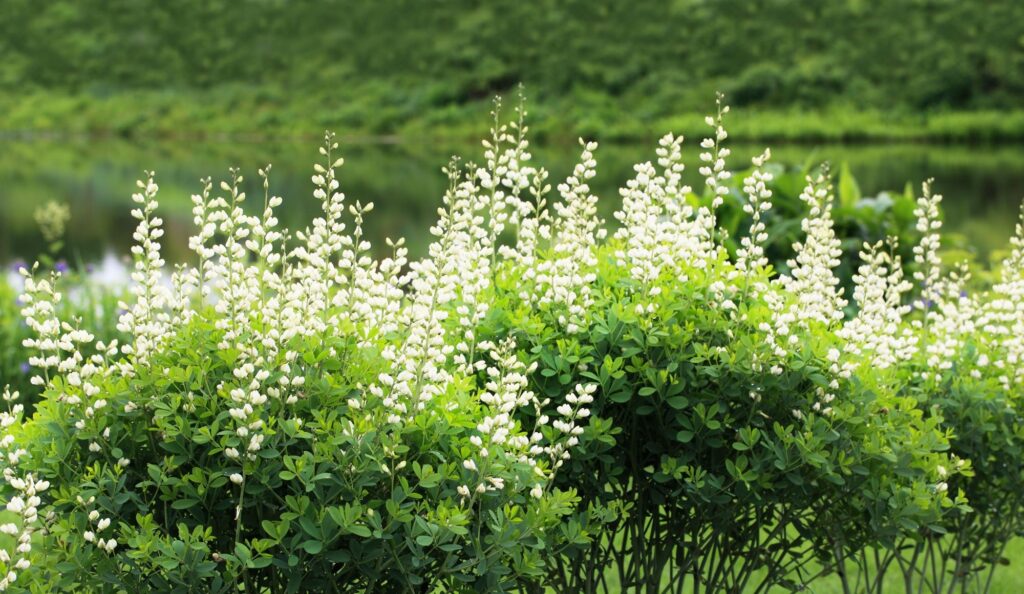
White False Indigo (Baptisia alba)
Flowers: June-July
White false indigo stands 3-5 feet tall with white pea-like flowers. As the flowers age, their seedpods produce a rattling sound in the wind, adding an auditory element to the visual display. This plant is a magnet for bumblebees and butterfly species, making it a vital component of the prairie ecosystem.
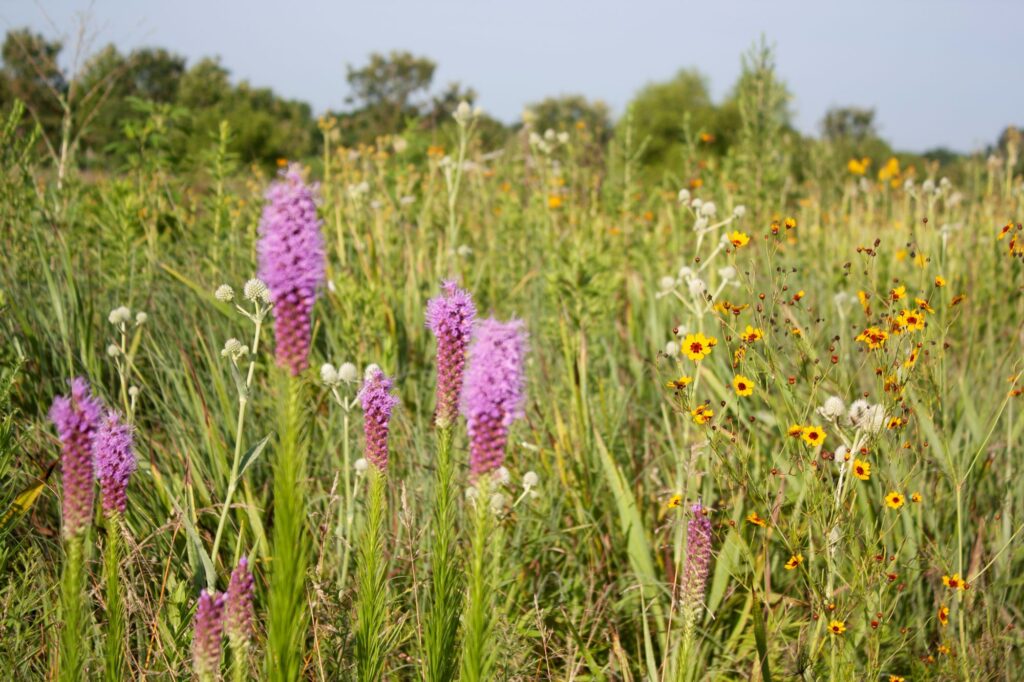
Prairie Blazing Star (Liatris pycnostachya)
Flowers: July-August
With its tall lavender flower spikes, Prairie blazing star blooms from top to bottom, creating a stunning visual effect. Native to tallgrass prairies, this plant attracts many pollinators including hummingbirds, butterflies, bees, and moths. Its beauty and ecological value make it a popular choice for both natural prairies and cultivated gardens.
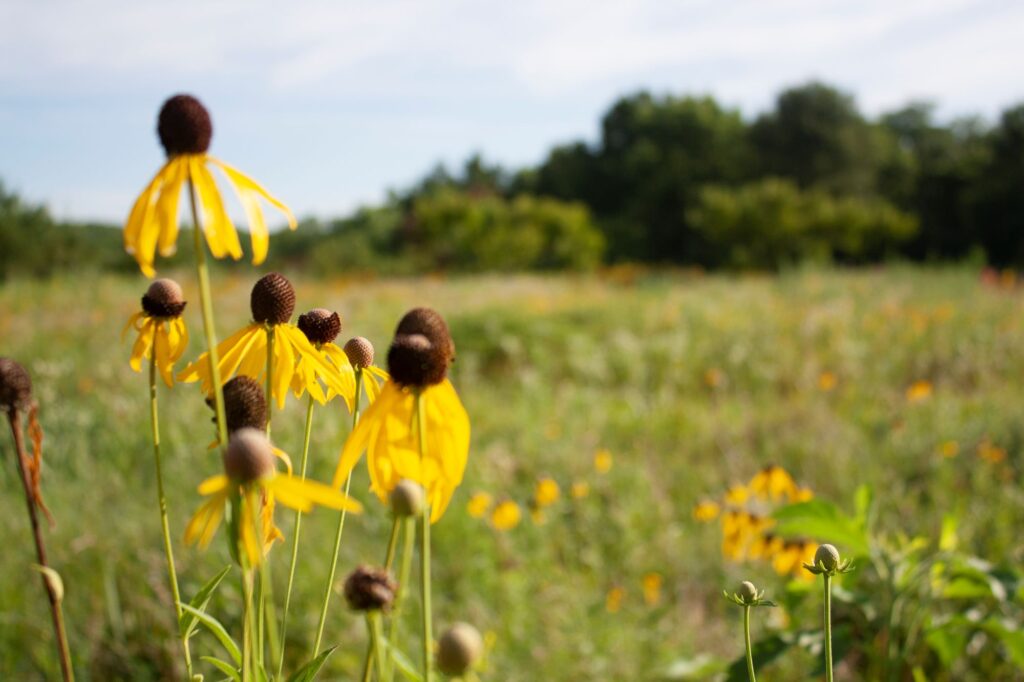
Grey-Headed Coneflower (Ratibida pinnata)
Flowers: June-July
Grey-headed coneflower is known for its bright golden flowers and a licorice-like fragrance. Standing at 3-5 feet tall, this plant’s seedheads are a favorite among prairie songbirds. Its long-lasting flowers are perfect for cutting and using in floral arrangements, adding a touch of natural beauty to any bouquet.
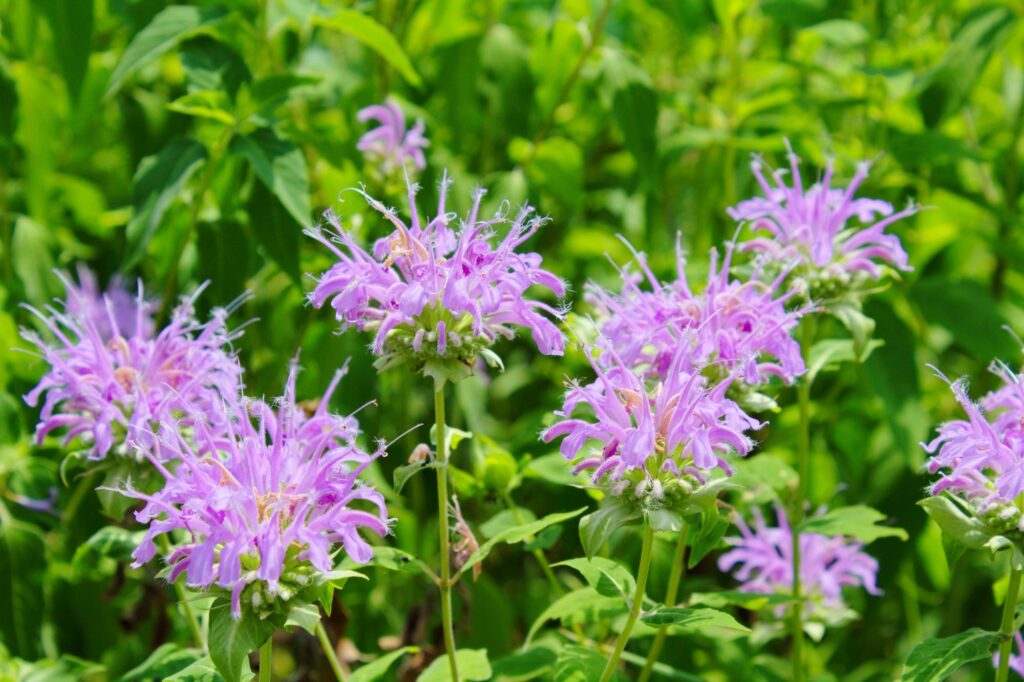
Wild Bergamot (Monarda fistulosa)
Flowers: June-July
Wild bergamot (commonly called bee balm) is cherished for its minty, fragrant leaves used in tea and dried flower arrangements. Historically, it was used to treat colds, coughs, fevers, and respiratory issues. This plant serves as a crucial nectar source for pollinators, attracting butterflies, moths, and hummingbirds with its aromatic blooms.
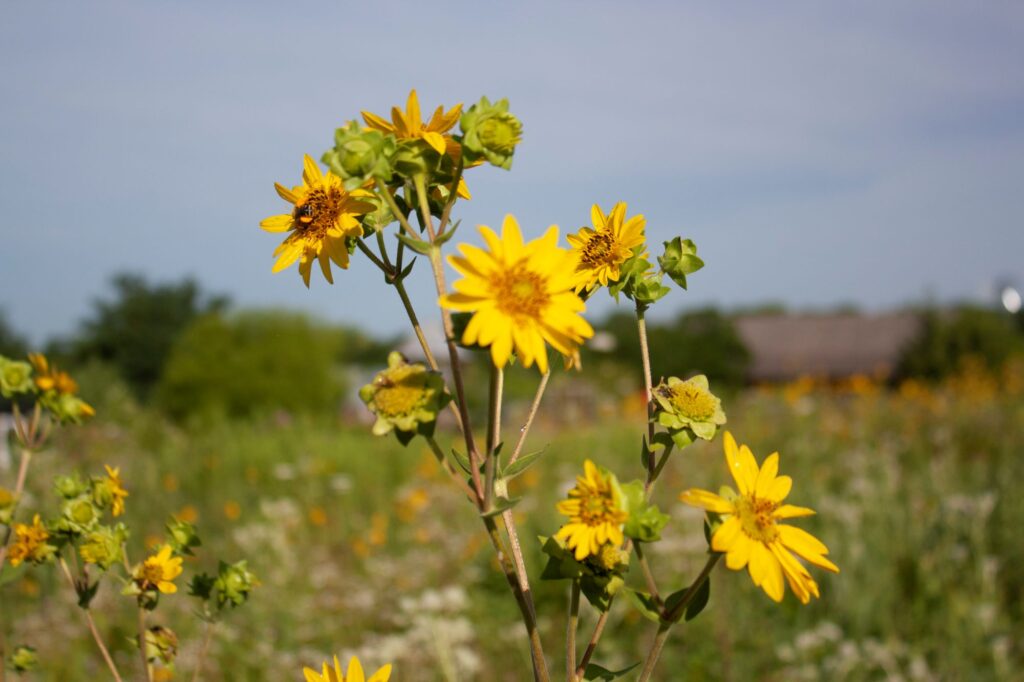
Cup Plant (Silphium perfoliatum)
Flowers: July-September
Cup plant is one of the tallest wildflowers in Missouri, reaching heights of six to nine feet. Its leaves form natural cups that collect rainwater, providing a water source for birds and insects. Also known as compass plant, its leaves align in a north-south direction, historically helping travelers navigate. Its sunny yellow flowers add cheer to any landscape.
Experience native Wildflowers at Powell Gardens
To experience the splendor of Missouri’s native wildflowers, a visit to Powell Gardens, Kansas City’s botanical garden, is a must. Powell Gardens offers close encounters with many of these native wildflowers, allowing visitors to see firsthand their vibrant colors and diverse forms. During your visit, stop by the Butterfly Meadow or Wildflower Meadow.
Plan your visit to Powell Gardens during Wildflower Week (July 9-14, 2024) and connect with nature through the beauty and significance of Missouri’s native wildflowers. By doing so, you not only enrich your understanding of these remarkable plants but also support conservation efforts ongoing at Powell Gardens.
Related Posts

